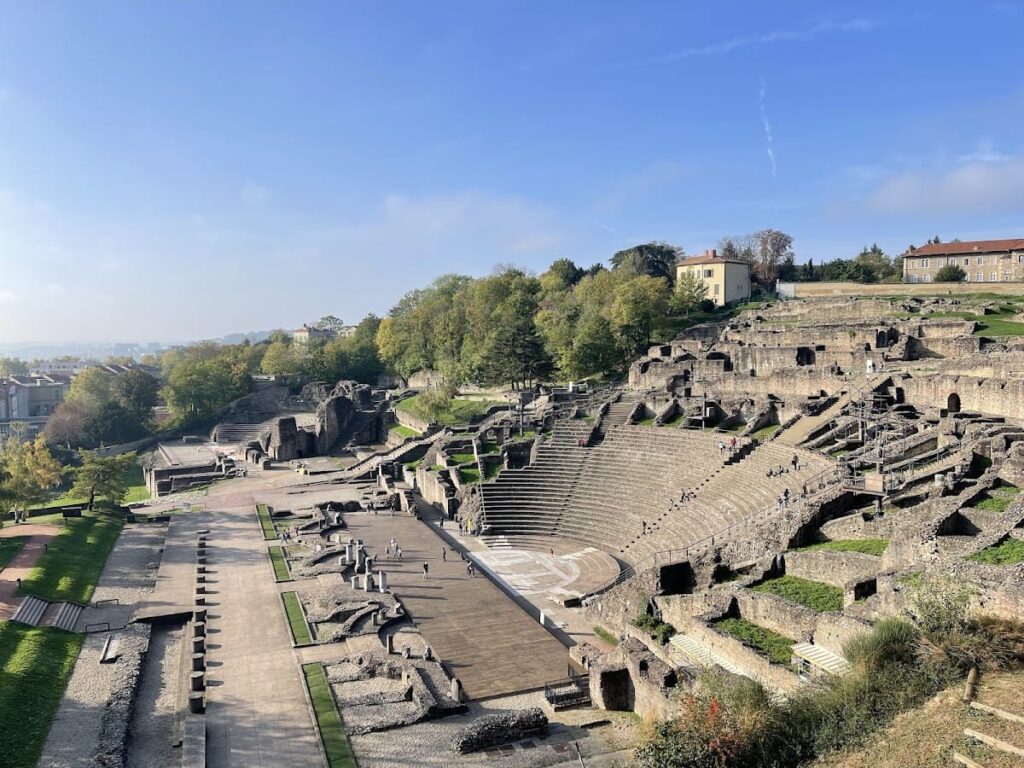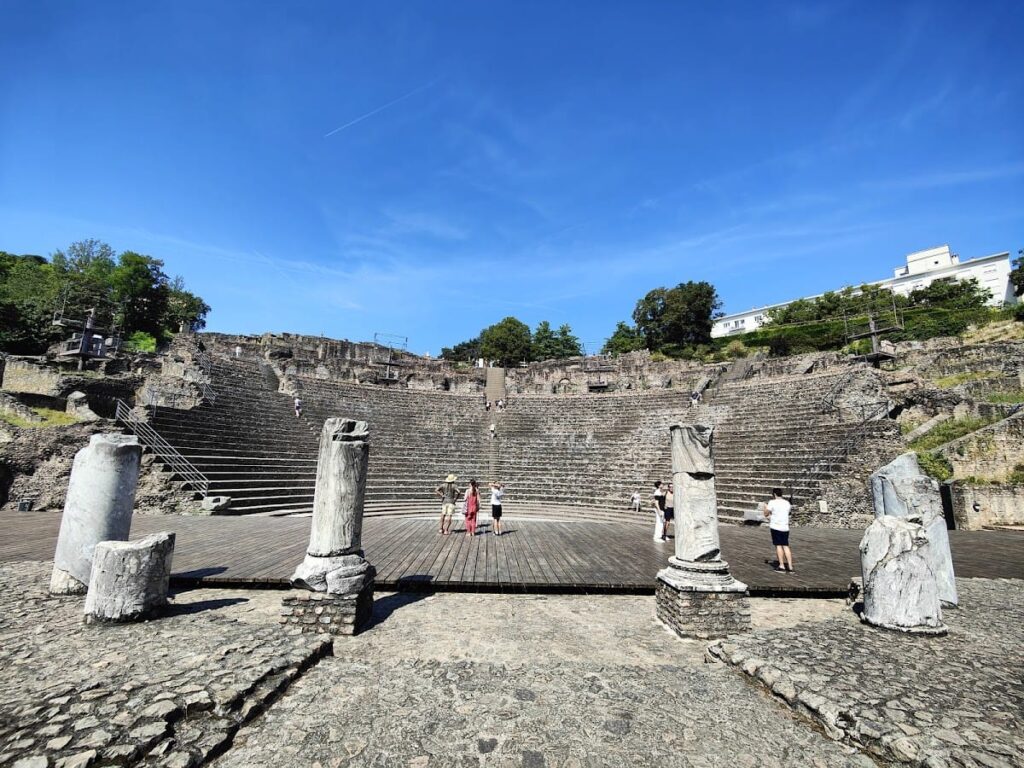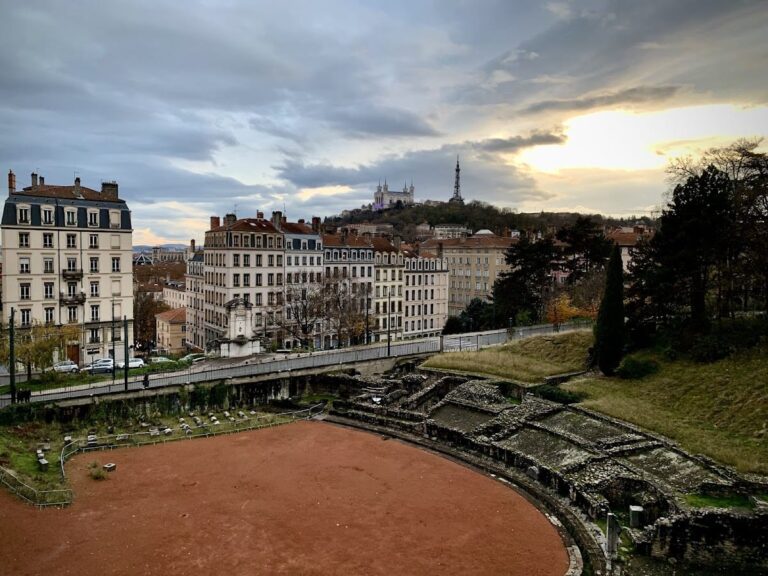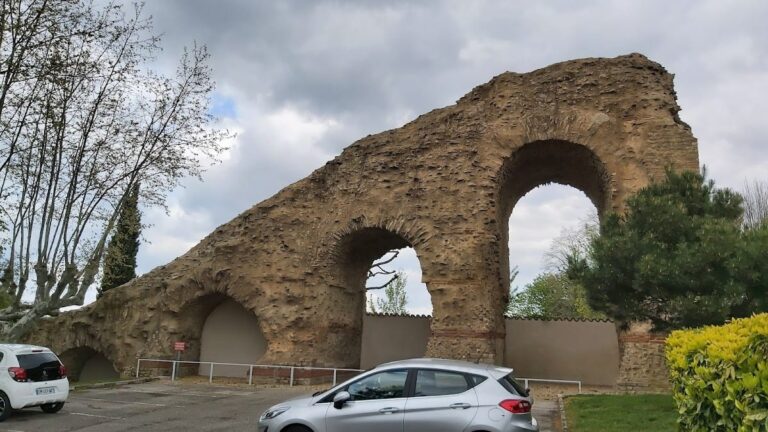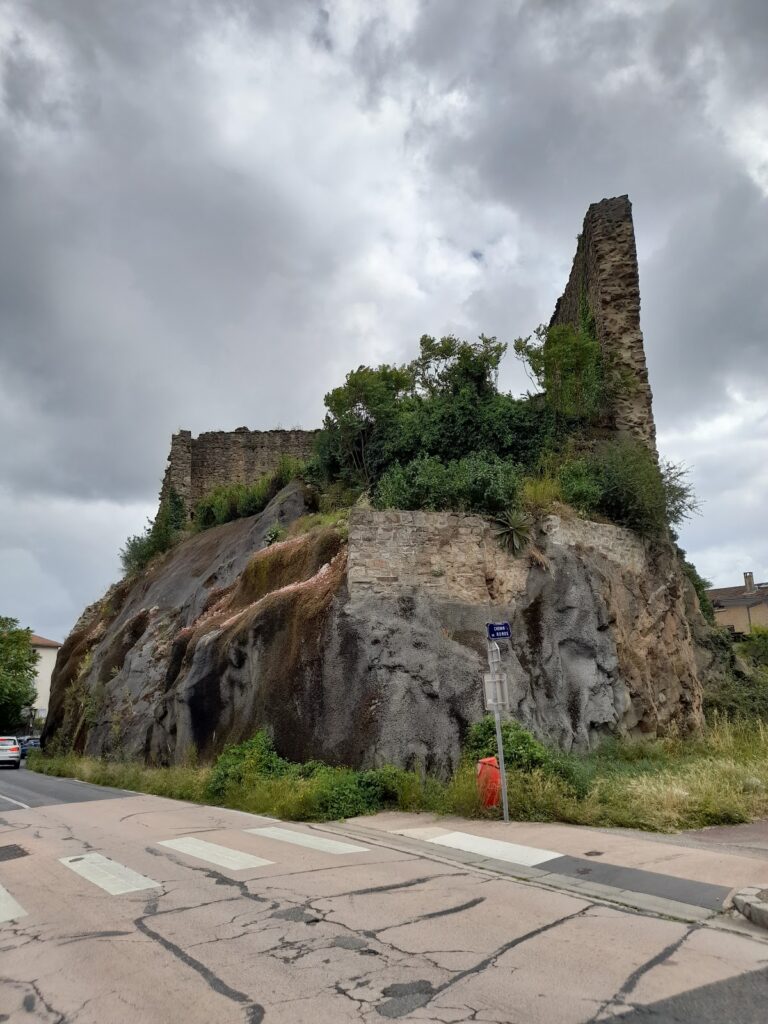Odeon of Lyon: A Roman Odeon in France
Visitor Information
Google Rating: 4.7
Popularity: Low
Google Maps: View on Google Maps
Official Website: www.archeologie.lyon.fr
Country: France
Civilization: Roman
Remains: Entertainment
History
The Odeon of Lyon is located in the city of Lyon, within the Auvergne-Rhône-Alpes region of modern France. It was built by the Romans during the late 1st century or early 2nd century AD, likely under the rule of Emperor Hadrian or Antoninus Pius. This small theater, known as an odeon, was constructed on Fourvière hill near a larger Roman theater, forming a rare pair of entertainment venues in Roman Gaul.
During the Roman period, the Odeon served as a place for musical performances, public readings, and possibly meetings of the city’s elite, such as the decurions, who were members of the local governing council. Its use declined by the late 3rd and 4th centuries as the population moved toward the lower city near the Saône river, leading to the Odeon’s gradual abandonment.
In the Middle Ages, the ruins of the Odeon were quarried for building materials. Stones from the site were used in major constructions, including the 12th-century cathedral and local bridges. A charter from 1192 specifically reserved marble and limestone from Fourvière for the cathedral’s construction. Over time, the remains became buried under debris from hill slope collapses and agricultural terraces. By the late Middle Ages, only the upper parts of the structure were visible, and the site was referred to in documents as “Caverna” or “grossa massa sarracenorum,” names reflecting its ruined and mysterious state.
Interest in the Odeon revived during the Renaissance when humanists identified the ruins as a Roman theater. However, religious scholars debated this identification, some believing the site to be the amphitheater of the martyrs of Lyon. Archaeological excavations began in 1933, initially uncovering the large theater. Between 1941 and 1958, further work led by Pierre Wuilleumier and Amable Audin revealed the Odeon. These efforts included clearing debris, restoring parts of the structure, and studying its architectural and decorative elements.
Since 1975, the Odeon has been part of the Fourvière archaeological park. It has hosted cultural events, including the Nuits de Fourvière festival, which began in 1952, continuing the site’s long tradition as a place for public gatherings and performances.
Remains
The Odeon of Lyon is a semicircular Roman theater built into the slope of Fourvière hill. It measures 73 meters in diameter and could seat between 2,500 and 3,000 spectators, making it one of the largest odeons in the Roman Empire. The seating area, called the cavea, originally had sixteen rows of stone seats arranged in four sectors divided by stairways. The cavea was supported by vaulted structures, some of which remain visible today.
Above the cavea is a wide passage known as the precintio, which once supported a balcony with seven additional rows of seats. This balcony rested on a gallery that no longer exists, leaving only the grassy embankment and foundations. The thick semicircular wall enclosing the cavea still stands up to eight meters high and may have supported a partial roof, although no direct evidence of roofing survives.
Spectators entered the Odeon through a corridor behind the seating, accessible by stairways from the street above and from the plaza between the Odeon and the larger theater. Five large entrance doors pierced the enclosing wall, allowing access to the seating area.
The orchestra, a semicircular space at the center, measures 17 meters in diameter. It featured three low tiers of movable seats for dignitaries, separated from the cavea by a marble balteus, a barrier about 86 centimeters high. This balteus has been partially reconstructed from 24 fragments decorated with stylized plant motifs.
The orchestra floor was richly decorated with a colorful opus sectile pavement made from eleven types of imported stones. These included various marbles from Carrara, yellow marble from Chemtou, green and red porphyry from Greece and Egypt, breccias from Skyros and Teos, gray granite from Baveno, and gray syenite.
Only the base of the pulpitum wall, which separated the orchestra from the stage, remains. The stage wall itself is completely destroyed and covered by a modern floor. The pulpitum was decorated with alternating semicircular and rectangular niches, likely adorned with marble bas-reliefs showing vine leaves, grapevines, baskets, small animals, and putti harvesting grapes. These fragments were recovered from a medieval lime kiln near the Odeon.
The curtain pit, a long narrow trench in front of the stage, measures 32 meters by 0.9 meters and is 1.3 meters deep. It was covered by slabs pierced with holes for vertical wooden posts that supported the stage curtain. A second wall bordered the pit and supported the stage floor.
Behind the stage, the rear façade faces east over an esplanade about six meters below the orchestra level. This wall, preserved up to 6.5 meters high, is built in opus mixtum, a technique alternating small stone blocks and brick courses. Red plaster remains are visible at its base. Three large niches are set into this rear wall: a central rectangular niche likely held a large statue, flanked by two rounded niches. Behind these are two vaulted square rooms, each about 8.5 meters wide and high.
A two-level portico once bordered the rear wall, indicated by a stylobate and column base. The portico pavement consisted of large white slabs with black joints arranged in offset bands, measuring 89 meters long and 6.5 meters wide. It was divided lengthwise by a low wall.
The esplanade behind the Odeon was paved with pink limestone and enclosed by walls. North of the esplanade, archaeologists identified a four-room building of uncertain function measuring 15 by 4.5 meters.
Numerous marble statues and decorative fragments were found in a medieval lime kiln near the Odeon. These high-quality copies of Hellenistic sculptures, possibly depicting a hunting group, date to the mid-2nd century AD during the Antonine dynasty. Many of these pieces are now displayed in the Gallo-Roman Museum of Fourvière.
